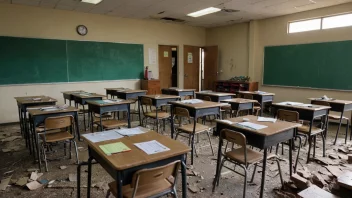In the aftermath of a disaster, mental health often takes a backseat to physical needs. However, addressing psychological well-being is crucial for recovery and resilience. Establishing mental health hotlines can provide immediate support and guidance to those in distress. Here are some key recommendations for creating effective mental health hotlines during disasters.
1. Assess Community Needs
Before establishing a hotline, conduct a thorough assessment of the community's specific mental health needs. This can involve surveys, focus groups, or collaborating with local organizations to understand the challenges faced by the population.
2. Collaborate with Mental Health Professionals
Engage licensed mental health professionals to design the hotline and provide support. Their expertise will ensure that the hotline offers appropriate guidance and resources to callers in need.
3. Train Volunteers and Staff
Volunteers and staff should undergo training in crisis intervention and active listening skills. This training will prepare them to handle sensitive conversations and provide the necessary emotional support to callers.
4. Create a 24/7 Support System
Disasters can strike at any time, and people may need help outside of regular business hours. Establishing a 24/7 hotline ensures that support is always available when individuals need it most.
5. Promote the Hotline Widely
Use various communication channels to promote the hotline, including social media, community bulletin boards, and local media outlets. Ensuring that the community is aware of the hotline is essential for reaching those in need.
6. Provide Multilingual Support
In diverse communities, offering multilingual support can make the hotline accessible to a broader audience. Ensure that trained staff can communicate in multiple languages or provide translation services.
7. Utilize Technology for Accessibility
Consider integrating technology such as text messaging or online chat options to make the hotline more accessible. Many individuals may feel more comfortable reaching out through these channels.
8. Establish Referral Systems
Develop a clear referral system for callers who may need more intensive support. Collaborate with local mental health facilities to ensure that individuals can be directed to appropriate resources.
9. Monitor and Evaluate Effectiveness
Regularly assess the hotline's effectiveness by collecting feedback from both callers and staff. This evaluation will help identify areas for improvement and ensure that the hotline is meeting community needs.
10. Foster Community Resilience
Encourage community involvement in mental health initiatives beyond the hotline. Empower individuals to support each other and create a culture of openness around mental health issues.
Establishing mental health hotlines during disasters is a vital step in supporting the emotional well-being of affected individuals. By following these recommendations, communities can create a lifeline for those in distress, fostering resilience and recovery in the face of adversity.






